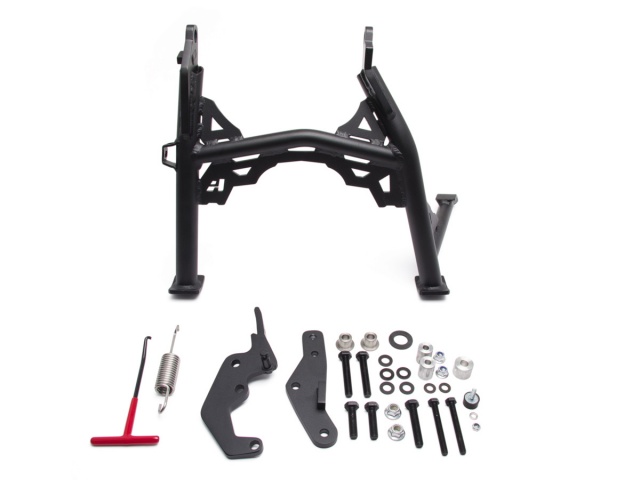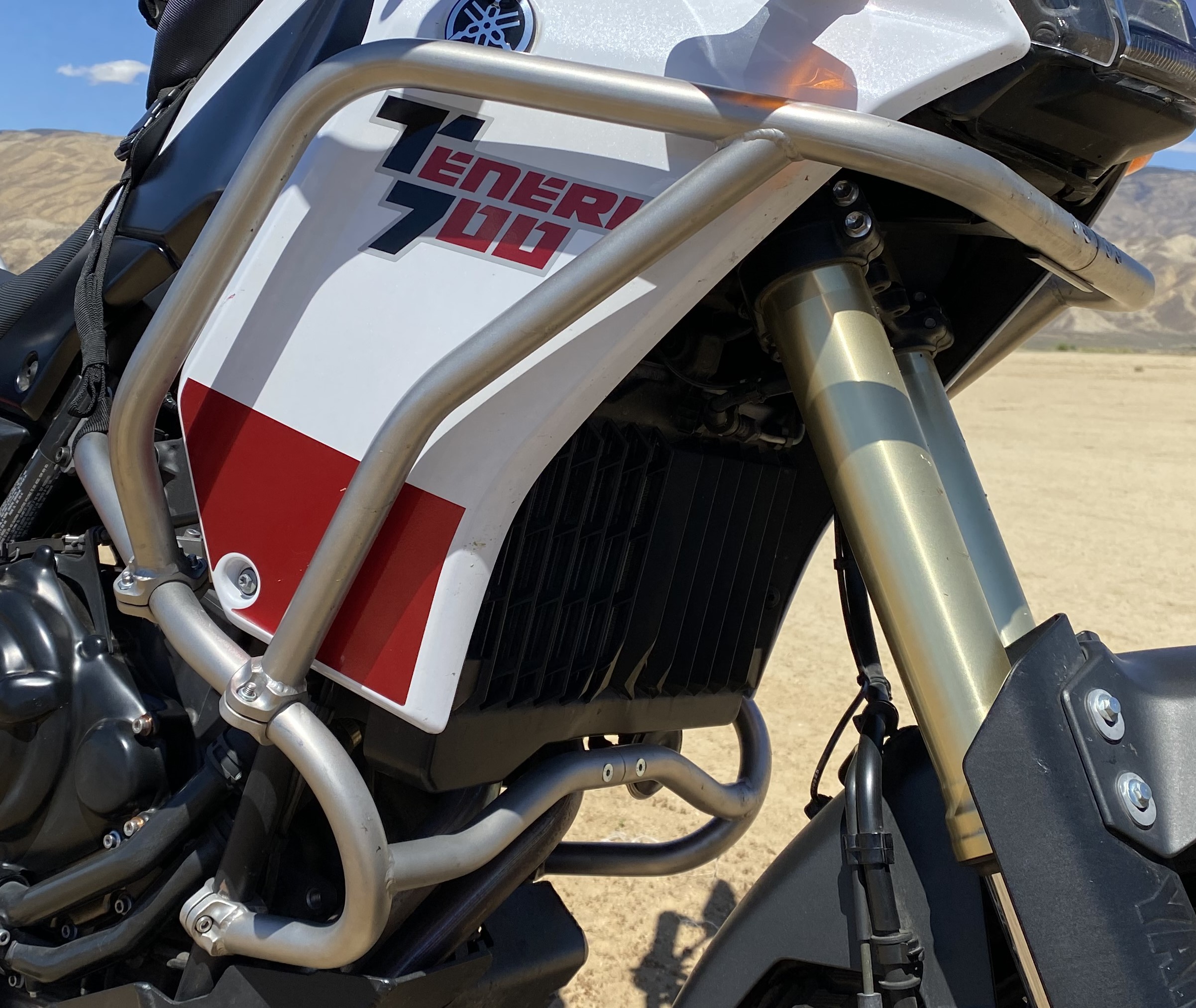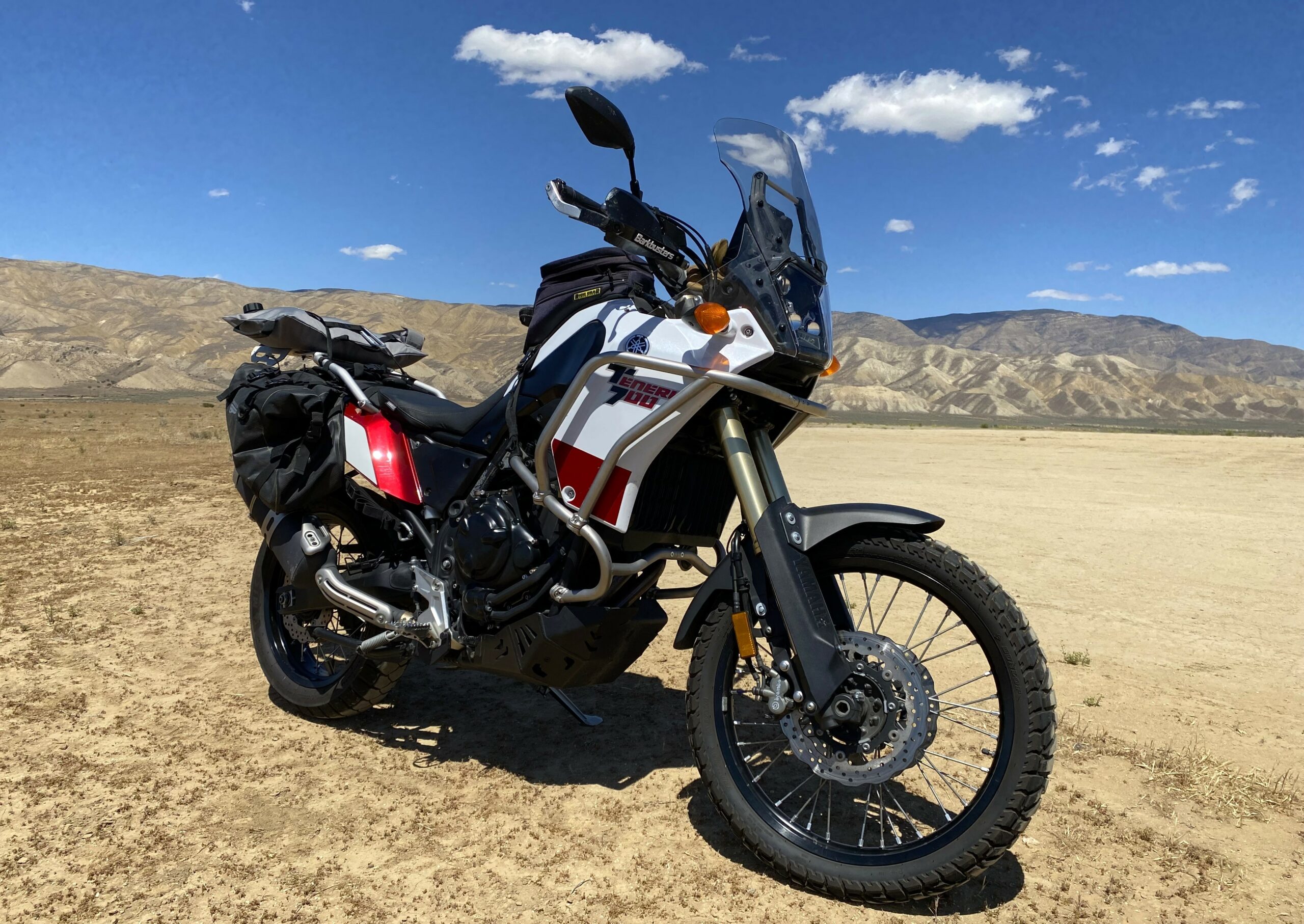AltRider Center Stand
AltRider’s motto could easily be, “find a need and fill it.” From a Ténéré 700 perspective, they’ve created better crash bars, an adjustable kick stand, three-position lowering links, and several other key items. Their latest effort for the Ténéré is an all-aluminum center stand. The OEM stand on my T7 is fully functional for getting the bike parked upright, but not ideal. What could make one center stand better than the other?

Four Ways Better
Weight is perhaps AltRider’s biggest improvement. At 7 pounds, including all fasteners, brackets, and spacers, the center stand is a claimed 44 per cent lighter than the all-steel OEM product. Second, the Yamaha’s deployment arm sticks out so far it could hook a leg in a tip over. The AltRider T7 design moves the lever an inch closer to the bike without affecting ease of use. Third, their stand comes with a much stronger spring to ensure that it won’t bounce in hard going. And finally, aluminum doesn’t rust.

The Complete Package
AltRider’s comprehensive kit contains everything required to install the stand, right down to blue thread lock and a spring puller. That last item is essential–their spring is a bear to stretch. The installation video introduces all the parts, where they fit, and the tools required for the job. Step-by-step instructions then guide you through the process. It looks easy, but the two bolts that hold the brackets on either side of the Ténéré also connect its lower frame members. Keeping these aligned when dismantling the frame is the key to a curse-free installation. Complicating matters, my AltRider skid plate also ties into these bolts.

Once in place, the stand is initially stiff but loosens up with use. I was hoping the new stand would make lifting my lowered bike easier. It did, but not by much. What concerns me the most is that the foot pad is not textured and becomes slippery when wet. My current solution to that problem is stick-on traction material. Otherwise, AltRider’s T7 center stand looks good, works good, and is built to last.
AltRider T7 Crash Bars
There’s a lot at stake when an adventure bike hits the ground, even if it just falls off the kickstand. Smashed plastic is a job for duct tape, but a damaged side case or radiator can mean riding home in a truck. The obvious solution is crash bars, of which there are many on the market in different designs, colors, and materials. I chose AltRider’s Ténéré 700 bars after the set on my former BMW F 800 GS protected it from a hard crash (off the road, onto rocks) on the Utah BDR. Here again I replaced an OEM product. While the Yamaha bars protected the bike in a few drops, one is slightly bent and they don’t cover as much of the bike as the AltRider.

Well-Built Protection
The AltRider T7 set comprises upper and lower sections. The lowers can be used alone but are required for installing the upper protection. AltRider mandrel bends 1-inch stainless steel tubing to maintain a constant radius, then manually TIG welds the bars. Three attachments to the motorcycle on each side and a connecting rod hold the lowers in place. Cast stainless steel clamps, another AltRider creation, are used to mate the upper bars to the lowers. The uppers also bolt to the frame behind the headlight, and are joined by an aluminum rod insert. The connections strengthen the structure, while making it somewhat tricky to install the various parts.
Stay Loose
Like the center stand, the crash bar video lays out all the parts, and is easy to follow. Attaching the lowers in three places is straightforward but required some extra manpower. Keeping everything loose until the upper bars are fit behind the headlight and lightly clamped to the lowers is key to a frustration free installation. Also, removing the side panels greatly facilitates attaching the upper support behind the headlight.

Ready to Rumble
The completed installation creates a steel cage that protects much of the bike’s front end. So far my bars have suffered no damage from a garage tip over and have protected the side panels from trail-side brush. AltRider T7 crash bars are available in bead-blasted stainless or powder coated black. The OEM bars hide the Ténéré 700 stickers on the bike’s side panels; AltRider gets style points for framing them in tubular steel.
$312.00 | Center Stand
$288.00 | Lower crash bars
$590.00 | Full crash bar set
altrider.com
Photo credit: AltRider, author
Read More: AltRider kick stand and lowering links
Our No Compromise Clause: We do not accept advertorial content or allow advertising to influence our coverage, and our contributors are guaranteed editorial independence. Overland International may earn a small commission from affiliate links included in this article. We appreciate your support.


